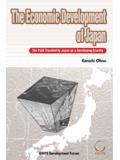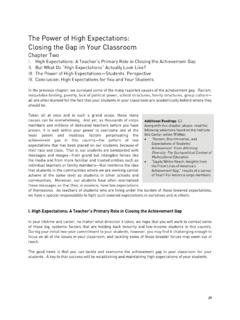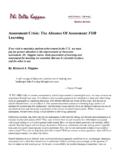Transcription of National evaluation policy - GRIPS
1 The National evaluation policy (NEP) Framework:Sharpening the Results Focus of the Philippine GovernmentNikki Ann CONSIGNA BERMUDEZ (MEP14120) National Economic & Development Authority, PhilippinesPolicy Design & Implementation in Developing Countries National Graduate Institute for policy Studies (Spring Term, AY 2014 2015) 24 July 2015 HighlightsI. The National evaluation policy (NEP) Framework: What is it and why do we need it? Contents of the NEP Context: The Government M&E Timeline Results-Oriented Public Sector Management (PSM) Status-quo of evaluation Activities in the GovernmentII. The policy -Making Process: How did we formulate it? Major Actors, Timelines, and InstrumentIII.
2 The policy -Implementation: Where are we now? Continuing evaluation Strategy IV. Summary & Conclusion Definition ( evaluation )InstitutionDefinitionOECD -DACAn assessment,as systematic and objective as possible, of an ongoing or completed project, program or policy , its design, implementation and results. UNEvaluation Group(UNEG)An assessment, as systematic and impartial as possible, of an activity, project, programme, strategy, policy , topic, theme, sector, operational area, institutional performance, etc. Uses ( evaluation ) For Learning-improving future projects and programs through the feedback of lessons learned; for knowledge generation For Accountability -disclosing information to stakeholders; informing resource allocation National evaluation policy (NEP) Framework (Joint NEDA-DBM Memorandum Circular No.)
3 2015-01) What is it? -A policy framework to guide the purposive conduct of evaluations in the public sector in support of good governance, transparency, accountability, and evidence-based of the NEP Framework Scope/ CoverageCreation of an Inter-Agency evaluation Task Force and its SecretariatGuiding Principles/ evaluation StandardsAll programs and projects implemented by the government, regardless of funding source. evaluation criteria evaluation competencies standards of ethics evaluation plans in accordance with best practices undertaking evaluations with due regard to impartiality reporting, dissemination, and use of evaluationsKey Elements Contents of the NEP Context: The GPH M&E Timeline 198719891992199319962001199920072011EO 230 ReorganizingNEDA mandatesthe agency tomonitor andevaluate theimplementationof the PDPEO 376 Establishedthe Regional ProjectMonitoring andEvaluation System(RPMES) for M&E atthe sub-nationallevelRA 8182 (asamended by RA8555) mandatedNEDA to conduct anannual review ofstatus of all ODAprojectsEO 93 furtherrefined andstreamlined theroles andresponsibilities andoperatingprocedures underthe RPMESNB ResolutionNo.
4 30 instructedthe ICC to review allongoing ODA-fundedprojectswith the aim ofimprovingabsorptive capacityNB Resolution No. 3provides forreporting of projectoutcomes andimpacts by ICC andImplementingAgenciesSector Effectivenessand Efficiency Review(joint exercise by DBMand NEDA, throughthe 2001 NationalBudget Call) assessedthe responsiveness ofprograms and projectsto sector outcomeobjectivesDBM adopted theOrganizationalPerformance IndicatorFramework (OPIF)which seeks to aligngood and servicessupported by thebudget with thegovernment s desiredoutcome objectivesAO 25 provided themechanism for theestablishment of aunified and integratedResults-BasedPerformanceManage ment Systemwithin the ExecutiveBranch of Public Sector Management (PSM)Features ofResults-oriented PSM: Presence of core result attributes.
5 Focus on common results Interdependency among the components Effective vertical and horizontal linkagesPSM ProcessRelatedGPH Process/ DocumentsPlanningPresident s guidepost (16 areas for transformational leadership);Philippine Development Plan (PDP);Results Matrix (RM);PublicInvestment Plan(PIP)Budgeting (andProgramming)Medium-Term Expenditure Framework (MTEF); Organizational Performance Indicator Framework (OPIF);Investment Coordination Committee Programming; General Appropriations Act National Expenditure Program (GAA NEP), etc. ImplementationProcurement,Contracting, Disbursement, ICC Reevaluation MonitoringOfficial DevelopmentAssistance (ODA) Review; Budget Performance Assessment Review (BPAR); Commission on Audit Reports, etc.
6 evaluation Socio Economic Reports; MDG Reports; Sector, Program, Project evaluation ReportsSource: Based on the results-based Public Sector Management (PSM) framework developed by the Asia-Pacific Community of Practice on Managing for Development Results (APCoP-MfDR), as cited in Tungpalan(2012)Institutional Framework Key Oversight Agencies National Economic and Development Authority (NEDA) Department of Budget and Management (DBM) Commission on Audit (Constitutional Body) Results-based Planning Performance-based Budgeting Value for money performance-based auditsExisting Mechanisms for the Results-based M&E (at the National , regional, and local government levels) Inter-agency Task Force on the Harmonization of National Government Performance Management, Information, and Reporting Systems (AO 25, series of 2011) The Regional Project Monitoring and evaluation Systems (EO 376, series of 1989, and amended through EO 93, series of 1993 Project Implementation Officers (PIO System) Evolving Framework for the Harmonized Results-based Performance Management System (AO 25) SectoralGoals/OutcomesGood Governance and Anti-CorruptionHuman Development & Poverty ReductionEconomic DevelopmentSecurity, Justice, and PeaceClimate change Societal Goals/OutcomesOrganizational OutcomesMajor Final Outputs (Product and Service Result Indicators))
7 Enablers/ DriversCitizen FocusInternal Processand FinancialStewardshipLearning, Growthand Leadership ResultsOPIFAll government agenciesEO 43/PDP(RM & OPIF)PDP(RM & OPIF)Results/OutcomesOrganizational Management ResultsComprehensive Performance IndicatorsWhy do we need it? *Government of the Philippines Draft Action Plan, Institutionalization of the Results-based Management in GPH Agencies, based from Institutional Development Model by Esman(1967) as cited in Blaise (1973) Operating rules & regulations are lacking and must be further LinkagesFunctional LinkagesDiffused Linkages Normative Linkages Hence, the need to improve and implement capacity-building initiatives,andto develop policies that would support results-based management.
8 Among these policies include the NEP Framework. Support for Evidence-based Decisions provide knowledge on project/program results enabling evidence-based decision-making related to current and future programming outcomes/impacts attributable to the project/program; efficiencywith which outcomes/impacts are achieved; extentto which outcomes/impacts align with National priorities. Ensuring Program Improvement providefeedback and learningthat can help improve current and future programming Ensuring Accountability provide to the people of the Philippines, donors and other interested parties of evidence-based findings, both positive and negativeon the status and accomplishments of GPH do we need it?
9 For the promotion and strengthening of the practice and use of do we need it? Status Before the NEP FrameworkCriteriaAssessment evaluation takes place in many of domestic evaluators in different discourse concerning of a profession with own arrangements in the arrangements in legislative exists (institutions, evaluators)PresentEvaluation takes place within the audit evaluations (not output and process)Emerging*Criteria adapted from Furubu, Rist, Sandahl, 2002, International Atlas of evaluation . Assessment of country context done by NEDA Deputy Director General Rolando G. Tungpalan, as presented in the 3rdM&E Network Forum, 6 8 November 2013 evaluation CultureEvaluation Status QuoEvaluation Activities Evaluations more pronounced at theprojects and program levels and are usually conducted by development partners through external evaluators; policy evaluations; Sectoralevaluations; evaluation of country assistance strategy; Country level evaluation ( , Paris Declaration and the Millennium Development Goals.)
10 Development Plans ( National and regional levels) evaluation Status QuoInstitutional MandatesImplementingAgencies OversightAgencies Inter Agency Committees Internal M Project Implementation Officers (PIO) System NEDA (planning) DBM (budgeting) COA (auditing) Office of the President Office of the Cabinet Secretary Investment Coordination Committee Project Monitoring Committees under theRegional Project Monitoring and evaluation SystemThe PSM, evaluation Status Quo, & NEP Framework whether GPH policies, projects and program achieve their intended development results (outputs, outcomes and impacts); adopt alternative strategies when evidence suggests that results are not being Framework(alongside other GPH M&E policies) Evidence-based decisions, accountability, and learning SHARPEN RESULTS FOCUS OF THE GOVERNMENT(within the context of the PSM) and strengthens systematic, rigorous and impartial evaluation activities in the GPH; evaluation activities of Government RESPONSE Ensureappropriate management response (follow-through actions) by concerned units to evaluation findings and TO PLANNING Ensure that results of evaluations are used as inputs to planning and budgeting processes and subsequent design of similar projects.

















